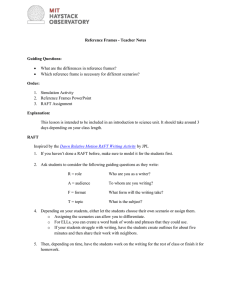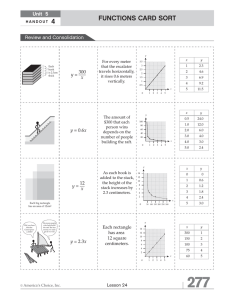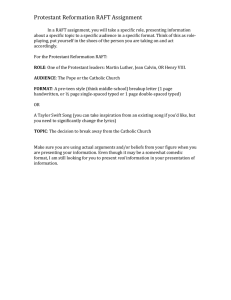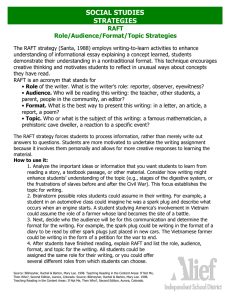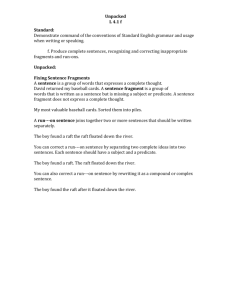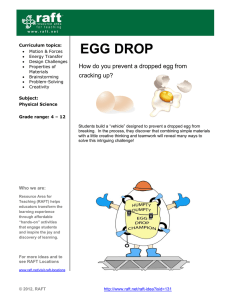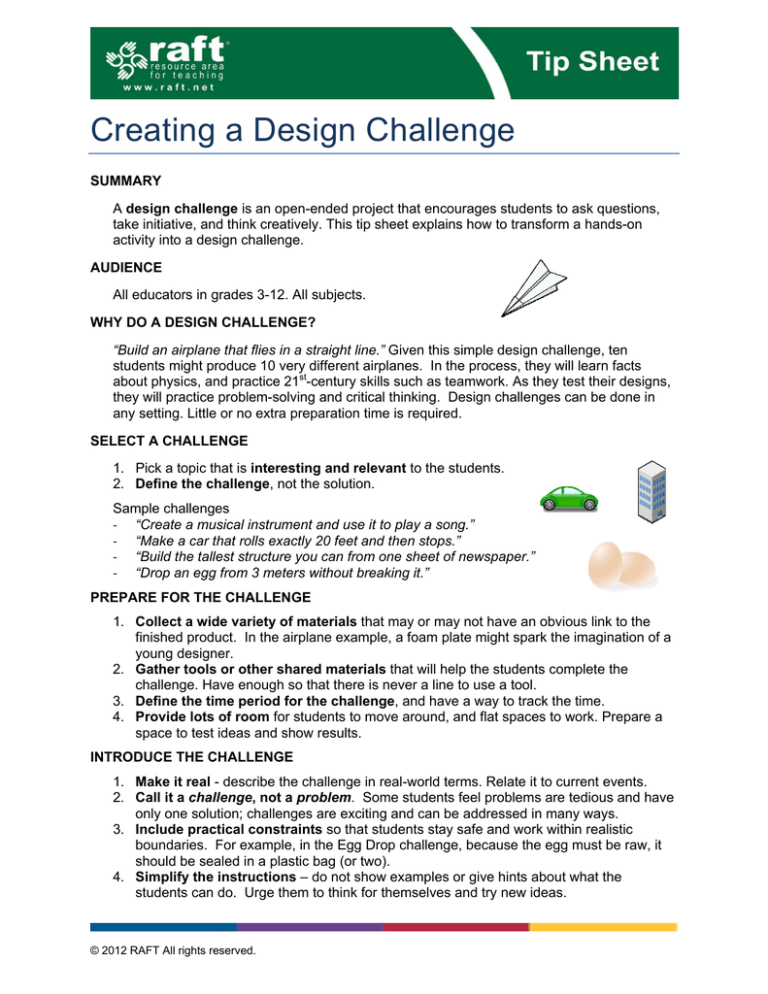
Creating a Design Challenge
SUMMARY
A design challenge is an open-ended project that encourages students to ask questions,
take initiative, and think creatively. This tip sheet explains how to transform a hands-on
activity into a design challenge.
AUDIENCE
All educators in grades 3-12. All subjects.
WHY DO A DESIGN CHALLENGE?
“Build an airplane that flies in a straight line.” Given this simple design challenge, ten
students might produce 10 very different airplanes. In the process, they will learn facts
about physics, and practice 21st-century skills such as teamwork. As they test their designs,
they will practice problem-solving and critical thinking. Design challenges can be done in
any setting. Little or no extra preparation time is required.
SELECT A CHALLENGE
1. Pick a topic that is interesting and relevant to the students.
2. Define the challenge, not the solution.
Sample challenges
‐ “Create a musical instrument and use it to play a song.”
‐ “Make a car that rolls exactly 20 feet and then stops.”
‐ “Build the tallest structure you can from one sheet of newspaper.”
‐ “Drop an egg from 3 meters without breaking it.”
PREPARE FOR THE CHALLENGE
1. Collect a wide variety of materials that may or may not have an obvious link to the
finished product. In the airplane example, a foam plate might spark the imagination of a
young designer.
2. Gather tools or other shared materials that will help the students complete the
challenge. Have enough so that there is never a line to use a tool.
3. Define the time period for the challenge, and have a way to track the time.
4. Provide lots of room for students to move around, and flat spaces to work. Prepare a
space to test ideas and show results.
INTRODUCE THE CHALLENGE
1. Make it real - describe the challenge in real-world terms. Relate it to current events.
2. Call it a challenge, not a problem. Some students feel problems are tedious and have
only one solution; challenges are exciting and can be addressed in many ways.
3. Include practical constraints so that students stay safe and work within realistic
boundaries. For example, in the Egg Drop challenge, because the egg must be raw, it
should be sealed in a plastic bag (or two).
4. Simplify the instructions – do not show examples or give hints about what the
students can do. Urge them to think for themselves and try new ideas.
© 2012 RAFT All rights reserved. FACILITATE THE CHALLENGE
1. Just do it - Jumpstart the process by giving the students a very limited time to come up
with their first idea and test it. Don’t worry if it does not work. It will get them thinking
and reduce their fear of failure.
2. Get them involved in brainstorming and rapid prototyping.
3. Encourage collaboration and teamwork. Once the students have tested an idea or
two, provide access to other resources that might answer their questions or stimulate
their thinking. Interesting raw material resources include such useful items as duct tape
and staplers. Another way to stimulate creative thinking includes items with less obvious
uses such as corks, feathers, or buttons. Amazingly, these unlikely components often
become key elements of imaginative designs!
4. Provide time checks so the students can pace themselves.
5. Stimulating young designers to look at old things in new ways is at the heart of the
design challenge experience. See RAFT Idea Sheet, Thinking Like a Real Survivor,
for ways to practice this skill. http://www.raft.net/ideas/Thinking Like a Real Survivor.pdf
STUDENT PRESENTATIONS
It is important to give the students a chance to explain and show their work. Provide a “test
zone” where final products can be demonstrated. Reward creativity and resourcefulness.
Celebrate really interesting solutions that “almost worked.”
GUIDED REFLECTION
1. Look back – Ask the students what did they learn from what did not work during this
project. And what did they learn from what worked during this project.
2. Look forward – ask them to reflect on what skills they practiced. How can they use
those skills in the future?
ASSESSMENT
1. Look for evidence of engagement and learning. Are the students actively working on
their designs? Are they are grasping the key underlying concepts?
2. After the challenge – what did you hear in their reflections? Are they seeing
themselves as team players and creative problem-solvers?
RELATED RESOURCES
‐
‐
‐
‐
RAFT hands-on activities that can easily be converted to design challenges:
Hovercraft - http://www.raft.net/ideas/Hovercraft.pdf
Leonardo’s Arched Bridge - http://www.raft.net/ideas/Leonardos Arched Bridge.pdf
Retractor a Go-Go Car - http://www.raft.net/ideas/Retractor a Go-Go Car.pdf
Rollback Can - http://www.raft.net/ideas/Rollback Can.pdf
ACKNOWLEDGEMENTS: Thanks to John Cassidy for his creative contributions.
© 2012 RAFT All rights reserved.

